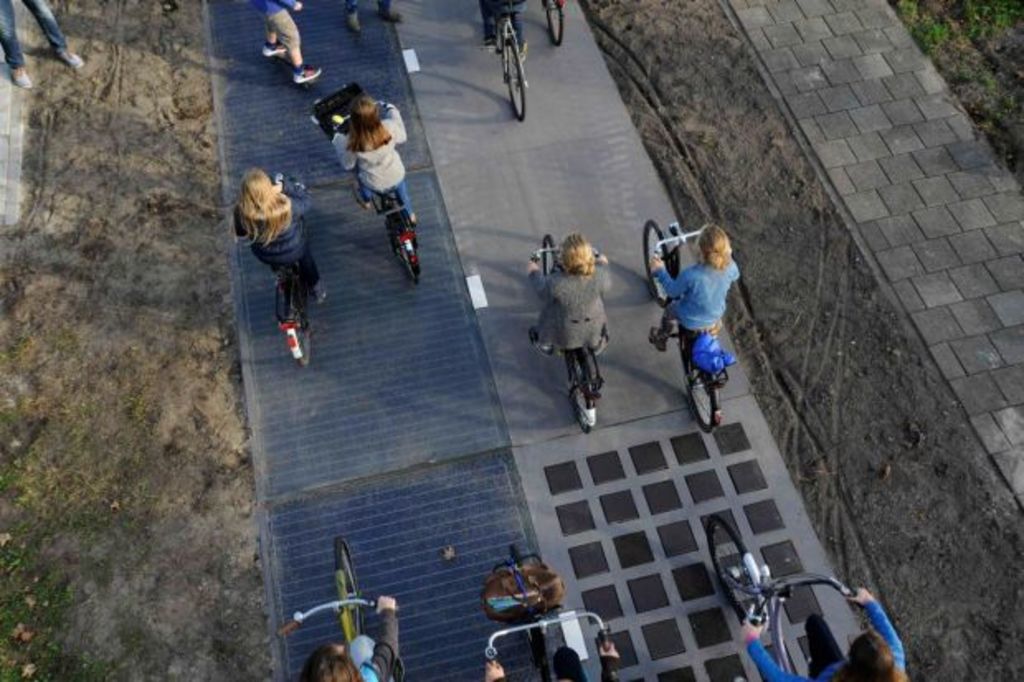Wave power to solar windows: five energy tech innovations you didn't know existed

Australians are becoming much more energy conscious, especially around the use of renewable energy technologies. We’re all familiar with solar hot-water systems and photovoltaic panels, but here are five energy tech innovations that may surprise.
Solahart PowerStore
 Photo: Solahart
Photo: Solahart
A new innovation from solar company Solahart is Solahart PowerStore – Australia’s first solar-optimised smart electric water heater – is to be launched in July. The system works by redirecting the excess solar power that isn’t being used by a household into heating their water – thus reducing energy costs and maximising the use of existing solar power systems.
Solahart PowerStore resembles an electric water heater but built into the tank is a number of intelligent controls that allow it to read a household’s energy consumption. Sean Box, Solahart’s technical manager, says Solahart PowerStore operates like a solar battery by storing thermal energy, but it’s more affordable.
“It makes use of excess solar power that would otherwise have gone to the grid by instead converting that energy to heating water that can be used later on by the household,” he says. “This makes better use of power by avoiding having to heat water at a later time such as in the evening when the rates are higher.”
Solahart PowerStore can be installed in homes that already have solar power or in tandem with a new solar power unit. Box says Solahart PowerStore is a highly affordable energy source. “There is a lot of demand for solar battery systems but they have higher upfront costs,” he says. “Solahart PowerStore is an entry level product that you can use before you take the next step towards implementing a battery.”
He adds that the savings can be upward of $1000 a year depending on a number of factors such as what system the household is replacing – if it’s gas or electric – how much solar power they generate, and how much hot water they use.
Solar windows
 Photo: ClearVue
Photo: ClearVue
Windows that harness the sun’s energy, which can then be used to power the house, are now a reality. A West Australian company, ClearVue, has developed a technology whereby infrared light is directed to the edge of a window where solar cells convert the light into electricity.
ClearVue says four square metres of this glass produce the same electricity as one square metre of solar panel. ClearVue spokesman David Tasker says certification testing is currently under way.
“Subject to successful accreditation to the Australian standards, a commercial product launch will occur this September.”
Belinda Wade, lecturer in strategy at University of Queensland’s Business School, likes the potential for solar use in the building industry.
“As well as solar windows there are also solar tiles and solar paint being developed,” she says. “The attraction of these products is they incorporate two functions into one so they offer both resource efficiencies and energy savings.”
Energy-generating bike paths and roads
 Photo: SolaRoad
Photo: SolaRoad
With so many more cyclists hitting the road, it makes sense to see if there’s any opportunity to make use of the energy they create. Unsurprisingly, the bike-friendly Netherlands is ahead of us in this area. In 2014, it became the first country in the world to build a solar bike path.
Its 70-metre SolaRoad bike path comprises concrete modules embedded with solar panels and covered in tempered glass. In the first six months, SolaRoad generated 3000 kilowatt-hours of energy, enough to provide a single-person household with electricity for one year.
And on the subject of transport, in January this year, China opened the world’s first solar highway designed to generate energy as well as handle traffic. France had already opened a solar panel road in 2016 but its road covers just half the distance of the Chinese version.
While Australia is yet to offer such a solution, Queensland is working on its Electric Super Highway, which will extend from the Gold Coast to Cairns and is expected to boost the uptake of electric vehicles. Phase one equips 18 towns with fast-charging stations making it possible to drive an electric vehicle from Queensland’s southern border to its far north.
Wave power
 Photo: Carnegie Clean Energy
Photo: Carnegie Clean Energy
Wave power is generating a lot of interest as a renewable energy source. According to the CSIRO, there are about 200 wave energy devices in various stages of testing and demonstration.
The world’s first grid-connected wave energy farm – which converts the power of ocean waves into electricity – was switched on in Western Australia in 2015.
Established by Carnegie Clean Energy, its Perth Wave Energy Project was the world’s first commercial-scale, grid-connected wave energy array. The project produced and sold both power and fresh water to the Australian Department of Defence to supply the country’s largest naval base on Garden Island.
Wade says wave and tidal power is still quite new in Australia. “You are generally looking at large-scale projects with these type of energy tech solutions,” she says.
Solar-powered train
 Photo: Byron Bay Railroad Company
Photo: Byron Bay Railroad Company
Claiming a world first, a solar-powered train began operating at Byron Bay on NSW’s Far North Coast last December. The Byron Bay Railroad Company refurbished the “red rattler”, which runs on a three-kilometre stretch of disused rail.
Solar panels on the train’s roof and a train storage shed generates the equivalent amount of energy required to operate the train each day, charging the onboard battery tank.
Meanwhile, Wade says Australia has come along in leaps and bounds with its use of energy tech. “Many of us already use solar voltaic panels on our roofs and LED lighting,” she says. “Other energy-efficient systems include occupancy detection in buildings where the building automatically adjusts its energy requirements.”
She adds that the population is showing it wants to have greater control over their energy systems.
“Energy retailers I speak to are finding an increased desire by consumers for distributed energy in their homes.”
We recommend
We thought you might like
States
Capital Cities
Capital Cities - Rentals
Popular Areas
Allhomes
More







